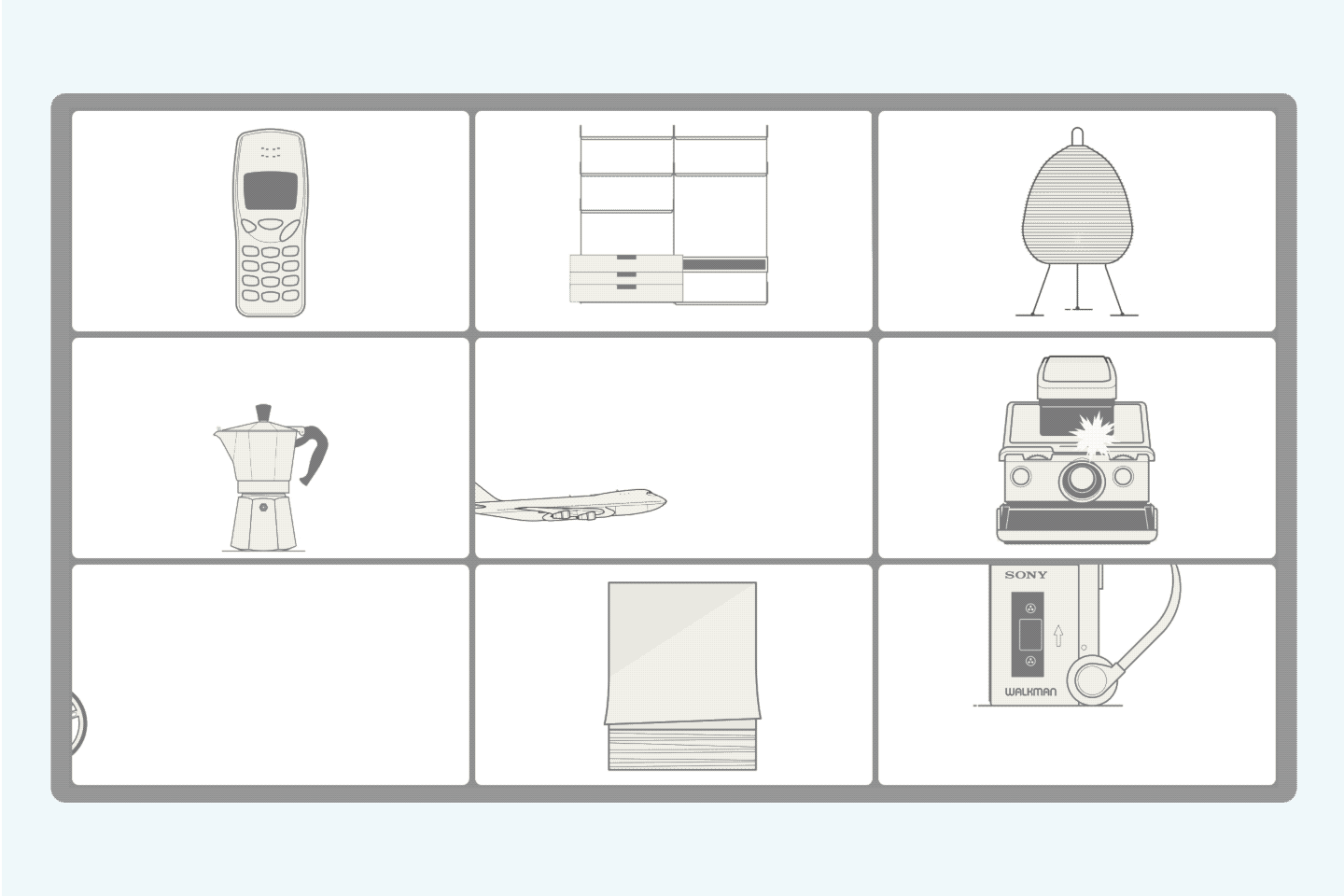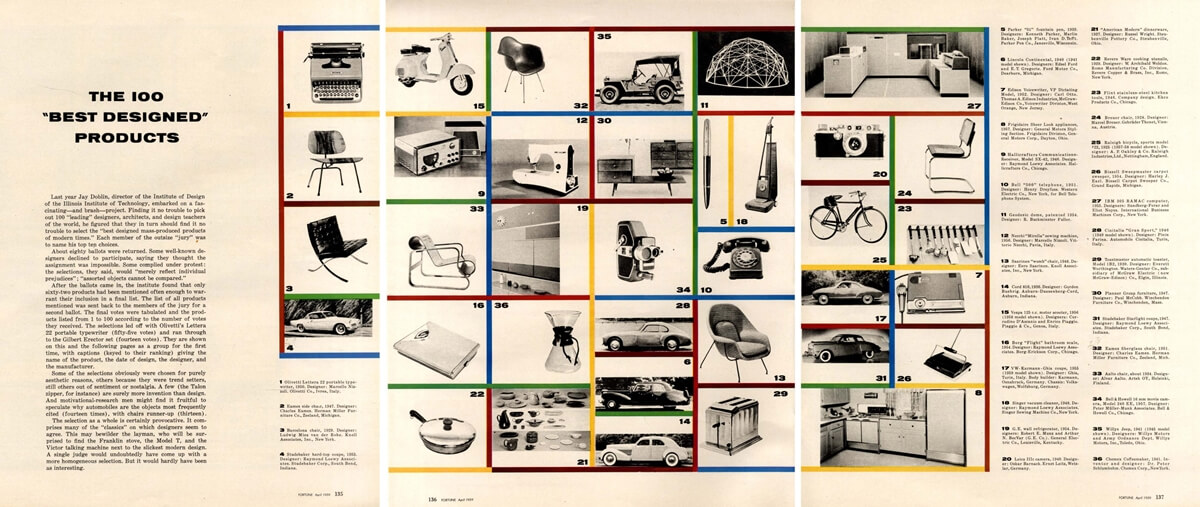In 1959, Fortune magazine, in cooperation with the Institute of Design at the Illinois Institute of Technology (IIT), published “The Greatest Designs of Modern Times” which displayed 100 product designs that left a mark on the modern era. In 2019, exactly 60 years after this publication, the Fortune team is again on a journey to find the best designs up to the contemporary era.
100 Best Product Designs of All Time

1959 vs 2019 : Changes in Design
The changes in research and answers throughout the years are remarkable.
In the new list, IIT Institute of Design (ID) questioned influencers, freelance designers, the period’s leading educators, and corporate design departments. Contrastingly, the survey in 1959 questioned the world’s leading designers, architects, and design teachers. These new groups exemplify the shift in the design approaches as well as the names who have an impact on design.
Also, the respondents stated why they chose their 10 selections in the recent survey. In the previous one, the respondents only named what they considered as the 10 best designs. Even though the groups nominated more than 300 designs, it is worth noting that most for the top 25 are the same.
The first 25 designs are ranked according to the number of votes they received. For the remaining 75, IIT Institute of Design conducted a language sample analysis. IIT then ranked the designs according to 5 criteria: adaptability of the design, impact on the society or environment, ease of use, effect on commercialization, and how it shapes or changes its category.

The results of the research are similarly intriguing. A thorough comparison of both surveys reveal a great change in understanding design and design philosophy in the last 60 years.
For example, 60 years ago, design meant having an aesthetic look and style. However, now in the rankings, functionality is at the forefront. Examples for this in the top 10 are Google Search Engine as number 3, Uber as number 7, or Netflix as number 8. The fact that these designs are in the top 10 is related to the convenience and ease of access they serve to the users, rather than their aesthetically appealing elements.
Service Design on the Rise, Product Designs in the Fall
In the list published in 1959, product design took the lead with 98 percent in the top 100. By 2019, there are only 63 product designs in 100. Categories that were not listed before, such as Ecology, Interface, and Service, come to the fore. Service design, which ranks second with 29 out of 100, makes a name for itself. Overall, this research reveals the broadening of the meaning of design.
Over the years, 14 Internet-based service designs replaced automobile and furniture, the leading categories of 1959. It seems like the invention of the internet changed the look of the designs as well as understanding design. It is interesting to observe the drop in automobile designs to 4%, from taking the lead with 14% in 1959. In addition, it is striking that Uber, an application that defines a transportation system rather than an automobile, ranked higher than any other automobiles in the list with 7th place.

Timeless Designs with an Ageless Style
Six designs go beyond the trends of their era and make it to both lists. Interestingly, some brands and designers also appear on both lists, just with different products.
Timeless designs and designers in both lists are: Fiberglass Chair by Charles & Ray Eames on number 4, Stool 60 by Alvar Aalto on number 39, Geodesic Dome by R. Buckminster Fuller on number 70, the font Futura on number 75 designed by Paul Renner, the Womb Chair by Eero Saarinen on number 82 and Model 500 desk phone designed by Henry Dreyfuss.
Distinguished brands and designers who have been on both lists with different products are: Isamu Noguchi with his lamp designs, Marcello Nizzoli with his typewriters, the famous camera brand Leica, Porsche with its quality cars, and IBM, the world’s largest information technology company.
Globalization in Design
Designs, which were Americentric and Eurocentric with 72 and 21 percentage respectively, have now spread more around the world. Although North America still is on the lead with 57 %, continents such as Africa and Asia are now on the list. Meanwhile, the number of countries in the list rose to 16, from 11 in 1959.
Source: FORTUNE https://fortune.com/longform/100-best-designs/
 Primitive Use of Artificial Intelligence: A Look from Past to Present
Primitive Use of Artificial Intelligence: A Look from Past to Present  The Future of Medical Design
The Future of Medical Design  A Night Full of Prizes: Celebrating 4 Wins at iF Design Awards 2023
A Night Full of Prizes: Celebrating 4 Wins at iF Design Awards 2023